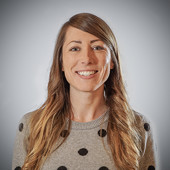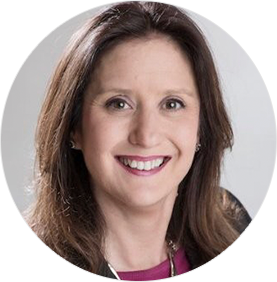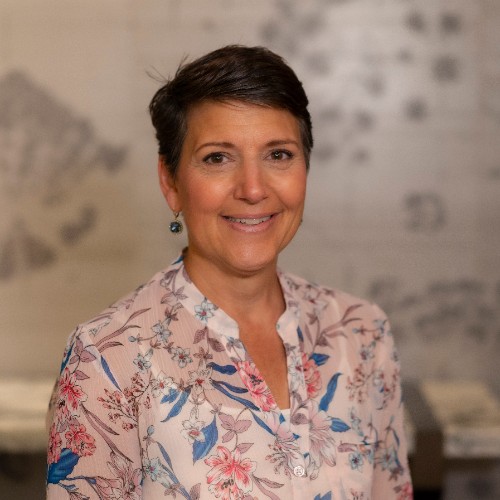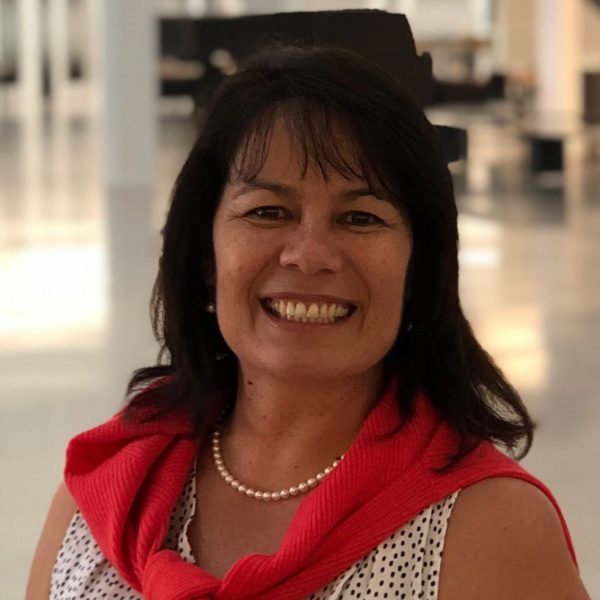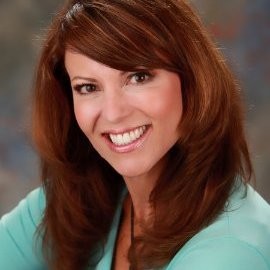Episode 91: Amanda Daume on Building a Sales Enablement Function From the Ground Up
2.8K Views | 13 Min Read
Shawnna Sumaoang: Hi, and welcome to the Sales Enablement PRO podcast. I’m Shawnna Sumaoang. Sales enablement is a constantly evolving space, and we’re here to help professionals stay up to date on the latest trends and best practices so they can be more effective in their jobs. Today, I’m excited to have Amanda from Revenue River join us. Amanda, I would love for you to introduce yourself, your role, and your organization to our audience.
Amanda Daume: Great, thanks Shawnna. I’m Amanda Daume, I head up the sales enablement team here at Revenue River. As an agency, we partner with clients across all kinds of verticals and at various stages of maturity to help them compete and win in the digital space. That means we cover everything from digital marketing and websites to eCommerce stores and sales systems. My team in particular is focused on aligning our clients’ people, processes, and tools to their buyers’ journeys.
SS: Fantastic. Well, Amanda, as you and I were just talking about, I’m super excited to have you here, given all of your experience building a sales enablement function from the ground up. I’d love for you to give some advice to our audience on where they should start when looking to do the same within their organization.
AD: Of course. It can seem incredibly daunting at first, and I think there are a lot of folks that are already fulfilling some sort of sales enablement responsibility in a really informal capacity. I think finding those opportunities to dig in and help other team members in that capacity and sort of tracking or logging your experience along the way so that you can build that case down the road is a great place to start.
SS: Absolutely. Now you mentioned building the case. What were some of the key indicators that your organization needed in enablement function and what were some of the main problems that you wanted to set out to solve?
AD: Yeah, we observed several key indicators at first, some of them anecdotal in nature and some of them more data-based. In our earliest engagements, we were primarily focused on marketing, and as marketers, we felt like the leads that we were generating in our digital campaigns just landed in a black hole.
We never had any idea if they were good leads or bad leads, if they changed into customers at any point. We also realized that we were guessing at strategy. We didn’t really have hard data to lean into, to say definitively, ‘this type of lead that comes from this particular source is a better lead than something that converts on the ‘Contact Us’ form on the website’.
So, the missing closed loop and the lack of attribution were big-time signs to us that we needed a sales enablement function.
SS: And how did you– because obviously I think for any net new function you really need buy-in from your stakeholders– so how did you gain buy-in from your stakeholders for a sales enablement function and the approach that you wanted to take with it?
AD: Sure. Internally, like I mentioned, I had been doing sales enablement really informally for quite some time on a number of different clients. So, I took their positive reviews, maybe kind emails that they sent along with really positive messages and shared those internally, like I said before, to build the case for sales enablement.
We also built case studies, success stories around the engagements that were more successful when we had sales enablement responsibilities in action. At that point we had enough evidence that we could make a positive impact on the engagement and the relationship, both in terms of results and longevity, that it became a no brainer for my boss at that point and he was very much on board and allowed us to move forward.
SS: That’s fantastic. Now, obviously anytime you’re starting something net new, you will come across challenges, often unforeseen. What were some of the biggest challenges that you faced in your journey building out the sales enablement function at Revenue River, and how did you overcome some of those challenges?
AD: That’s a great question. There was no shortage of big challenges. The lack of firsthand sales experience for me personally, and eventually for my team members – like I mentioned, we all came from marketing– that was a little bit of a struggle. As was the lack of great examples of sales enablement as a function to model after. We built the department out four years ago and at that time it was in the earliest stages of the resurgence around the buzzword ‘sales enablement’, but there wasn’t really an official function. There’s a massive gap in education and therefore demand. Like I said, lots of people were probably already doing sales enablement, unofficially, but not really talking about it.
We tried to focus on three main things, and that was: one, finding opportunities to get the experience and build a portfolio. The second thing was creating what guidelines and processes I could as I went, knowing that I would need to scale this function if it was going to be successful. And then the third thing was educating our customers, and that’s both internal customers, of course, as well as our external customers on our approach to sales enablement.
SS: I think those are three really good focus areas for sure. Now, as you mentioned– without kind of a sales background, yourself coming from the marketing side, how did you drive adoption and buy-in and excitement for the enablement function among the sales teams that you support?
AD: Yeah, initially it was a real struggle for us. I think that we lacked the credibility in the sales teams’ eyes. We would build these shiny new systems, these elaborate training plans, and we would arm them with tons of content. But when we went back in our post-launch follow-up, they’d get terrible scores for some reason.
We eventually realized a couple of things: one, we weren’t getting enough input early on from the folks in the trenches to really have their buy-in and use their experience to influence what we prioritized. We also didn’t understand their day-to-day well enough to truly get their priorities, their goals, and their challenges.
So, we reworked our processes to round out our feedback gathering. We piloted earlier and that really helped us win over advocates in the process that we could use to pick up those quick wins when we launched, and then use that as propaganda for the rest of the team to demonstrate that when they follow the process that we rolled out or used the content that we provided, that it actually worked. We also completed a number of trainings in sales strategies and selling methodologies so that we could better understand the ins and outs and really go where they are.
A good example of that– just understanding the cadence of their sales rhythm so that we knew when was an optimal time to schedule a meeting to get their feedback and when would be a terrible time for them, just based on their monthly and quarterly sales rhythm.
SS: Absolutely. I think that those are good points. You mentioned, if you don’t mind me deviating just a little bit, that you realized that you needed to better understand a day in the life of a sales rep. What did you and your team do specifically to dive deeper in and understand what it means to walk in the shoes of a sales rep?
AD: We did it a number of things. We shadowed sales calls both internally, our internal sales team, as well as sitting in on client sales calls. There’s a number of trainings out there from different platform providers like HubSpot, for example. We also had a sales consultant come into our agency and do a session with us as she would any other sales team. We listened to our sales teams’ phone calls so that we could see the objections that they were running into and what questions they were getting in the process, again so that we could just understand what they were up against, and be better prepared to prescribe either a new strategy or a new piece of content to help them.
SS: Fantastic. As your team has grown, Amanda, what are the respective roles inside the enablement organization that you run now?
AD: So, we recently made some adjustments, before we had a dedicated architect who would pull the systematic solution together and figure out how all of the tools should talk to each other.
We had a dedicated content person who was working with the marketing team to pull together any pieces that the sales rep might need throughout the sales cycle. And then we had an ongoing maintenance reporting/analysis role. We would have multiple people on each project or engagement, and we realized that that wasn’t going to scale very well.
So, instead of having an assembly line of sorts, we shifted the role so that each person would own the entire sales enablement engagement. So that would be the early-on system solution, the training and onboarding adoption, and then the ongoing maintenance or optimization. From that perspective, that entails a lot of closing that feedback loop between the marketing team and the sales team to understand what content does sales need to compliment the marketing campaign that might be running? How is it performing? Are they getting additional questions in the sales cycle that marketing could better address if they shift their messaging? So now the role is focused more on strategy, execution, and analysis.
SS: I love that, and I think that actually dovetails really well into my last question for you. It is really around kind of the analysis part and proving out the value. So, how have you done that? How have you proved the value of the enablement function to your executive stakeholders and really kind of shown that ROI case to them?
AD: I wish I could say it was really simple, but it really depends on the engagement and the objective. We might track things like lead response time, pipeline conversion rates, rep productivity, or active selling time, content consumption, overall pipeline health, or any combination of those. And when it comes to sharing those insights, we do it as proactively as we can with various stakeholders.
So, everybody’s getting a little bit of the information instead of doubling down on only one stakeholder, because if that person happens to leave or they have competing priorities, it’s easy for us to get wedged out of the equation. So to do that, we’ll send maybe a quick video of us reviewing a dashboard or metric; we’ll email screenshots, or in some cases we’ll even jump on a quick call in real-time to share something that’s really positive that we’re seeing.
But that said, we don’t try to hide from poor outcomes. We share them openly along with our best assessment of what went wrong and what we would recommend is the best path forward. We displayed that that’s the best key to building lasting trust and buy-in. If you’re always just highlighting the positive and trying to shy away from the negative, I think that stakeholders will see through that and it’s not a good long-term strategy.
SS: Absolutely. Amanda, it’s been fantastic talking to you about how you’ve built the sales enablement function from the ground up, and kudos on the fantastic job and the evolution that you guys have seen already and just the first four years. So, thank you for joining us today, Amanda.
AD: Thank you for having me. It’s been a real pleasure.
SS: To our audience. Thanks for listening. For more insights, tips, and expertise from sales enablement leaders, visit salesenablement.pro. If there’s something you’d like to share or a topic you’d like to learn more about, please let us know. We’d love to hear from you.

